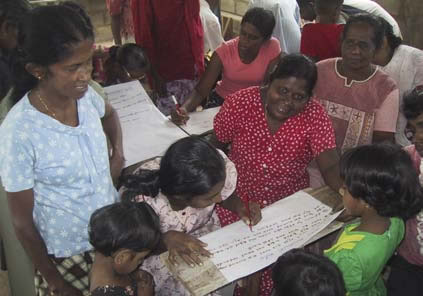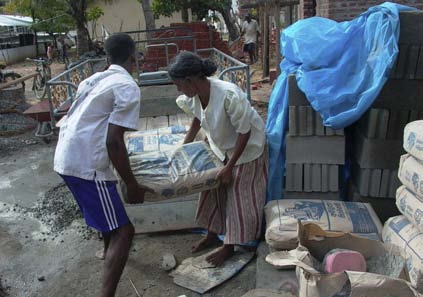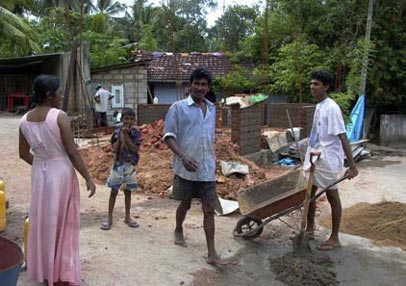|
|||||||
| This case shows how integrated and strategic action in a UN-Habitat project in Sri Lanka was able to maximize the underlying benefits of rehabilitation and reconstruction after the 2004 tsunami. Strategic planning is often associated with top-down planning, the case presented here shows that being strategic can also work bottom-up. | |||||||
| The tsunami that struck southern Sri Lanka in 2004 resulted in the death or displacement of more than half a million people and the destruction of community infrastructure such as wells, drainage, community centres, preschools, schools and roads. Responding to this disaster, UN-Habitat’s Rebuilding Community Infrastructure and Shelter (RCIS) project in Galle focused not only on rebuilding houses but also on supporting communities in the reconstruction of infrastructure. In the 12 months prior to March 2006, the programme assisted 700 households in 10 tsunami-affected communities RCIS used a participatory approach that aimed for community-wide impacts through empowering vulnerable people and giving a voice to the tsunami-affected. This included:
|
|||||||
© Katja Schäfer | During the process, self-confidence among the beneficiary community has been generated and human dignity restored by fully engaging in the reconstruction those who had suffered but survived the tragedy. Not only were buildings rebuilt, but also shattered lives and communities and self-reliance. Community governance has been re-established as well as self-managed, creating sustainable acommunities with social facilities and livelihood opportunities | ||||||
Community Development Councils and Action Plans
Community Contracting The communities gained directly from the project implementation through employment as well as through the outputs of the project itself. Furthermore, because community members were directly affected by the way in which the reconstruction work was carried out and because benefits of local contracts went directly back into the community as opposed to an intermediate actor, there was a strong incentive to see that work was carried out properly. Whereas conventional procurement of reconstruction works had a single benefit, the provision of shelter or the infrastructure itself, community partnering doubled the benefits obtained from investment. Physical infrastructure was provided along with skills development and income-generating activities.
Possible employment opportunities arose not only during the implementation of the project, but additionally as small-scale enterprises were created in the community. Through on-the-job training community groups were capable of undertaking tasks of which they had no previous experience. Skilled labour was hired as much as possible from within the community or adjacent areas with residents who were experienced skilled construction workers. These workers played a key role in managing the construction process and had the potential to act as trainers and demonstrators for less experienced individuals | |||||||
| |||||||
| |||||||
| More Making Planning Work case studies |
|
|||||||||||||||||||||||||||
| Updated 01 June 2006 | |||||||||||||||||||||||||||


